Immunological profiling of patients with ulcerative colitis leads to identification of two inflammatory conditions and CD1a as a disease marker
- PMID: 27809916
- PMCID: PMC5094062
- DOI: 10.1186/s12967-016-1048-9
Immunological profiling of patients with ulcerative colitis leads to identification of two inflammatory conditions and CD1a as a disease marker
Abstract
Background: Conventional approaches to understand mechanisms underlying the development of pathological manifestations in ulcerative colitis (UC) mostly rely on identification of certain cell types and cytokines followed by verification of their roles in vitro and in vivo. In light of the highly dynamic processes in UC, requiring the cross talk of immune cells, epithelial-, endothelial-, muscle cells and fibrocytes, this approach might neglect temporal and spatial connectivity of individually differing inflammatory responses.
Methods: We undertook a more holistic approach whereby we designed a flow cytometric analysis- and ELISA panel and determined the immunological profiles of UC patients in comparison to Non UC donors. This panel consisted of B-cells, T-cells, macrophages, monocytes, NK- and NK T-cells and subtypes thereof, the cytokines TGFß1 and HGF, the chemokine TARC and periostin. Blood was collected from 41 UC patients and 30 non-UC donors. Isolated PBMC were subjected to flow cytometric analysis and sera were analyzed by ELISA. Data were analysed by cluster- and correlation analysis. To corroborate that the identified cells reflected the inflammatory condition in the colon of UC patients, leucocytes were isolated from colons of UC patients and subjected to the same flow cytometric analysis.
Results: Immunological profiling followed by cluster- and correlation analysis led to the identification of two inflammatory conditions: An 'acute' condition characterized by adaptive immune cells as plasma cells, TSLPR expressing CD11b+ macrophages, CD64 and CCR2 expressing CD14+ monocytes, HGF and TARC and a 'remodeling' condition signified by NK T-cells and TLSPR expressing CD14+ monocytes, TGFß1 and periostin. ROC analysis identified TARC and TGFß1 as biological markers with high potential to discriminate between these two conditions (Δ = -6687.72 ng/ml; p = 1E-04; AUC = 0.87). In addition, CD1a+ CD11b+ macrophages (Δ = 17.73% CD1a+ CD11b+; p = 5E-04; AUC = 0.86) and CD1a+ CD14+ monocytes (Δ = 20.35; p = 0.02, AUC = 0.75) were identified as markers with high potential to discriminate between UC and Non UC donors. CD1a+ CD11b+ macrophages and NK T-cells were found to be significantly increased in inflamed colons of UC patients as compared to non-UC control samples (p = 0.02).
Conclusions: Immunological profiling of UC patients might improve our understanding of the pathology underlying individual manifestations and phases of the disease. This might lead to the development of novel diagnostics and therapeutic interventions adapted to individual needs and different phases of the disease. In addition, it might result in stratification of patients for clinical trials.
Keywords: Biomarker; CD1a; Correlation analysis; HGF; Immune-profiling; TARC; TGFß1; Ulcerative colitis.
Figures
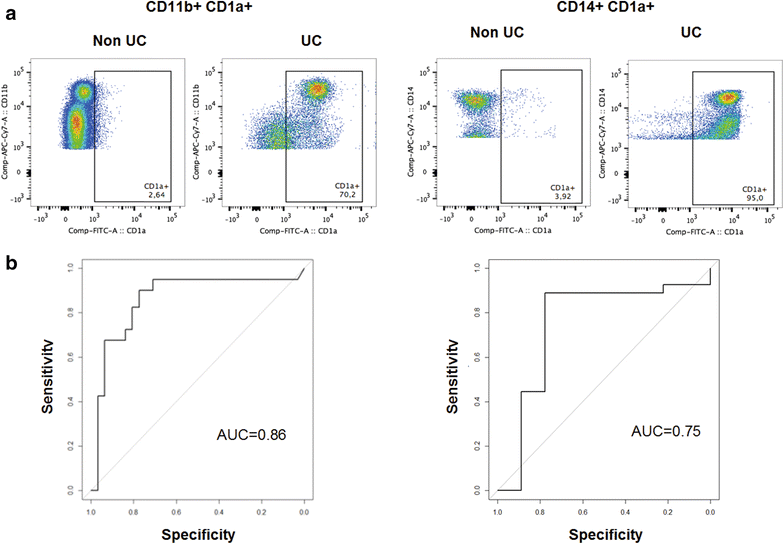
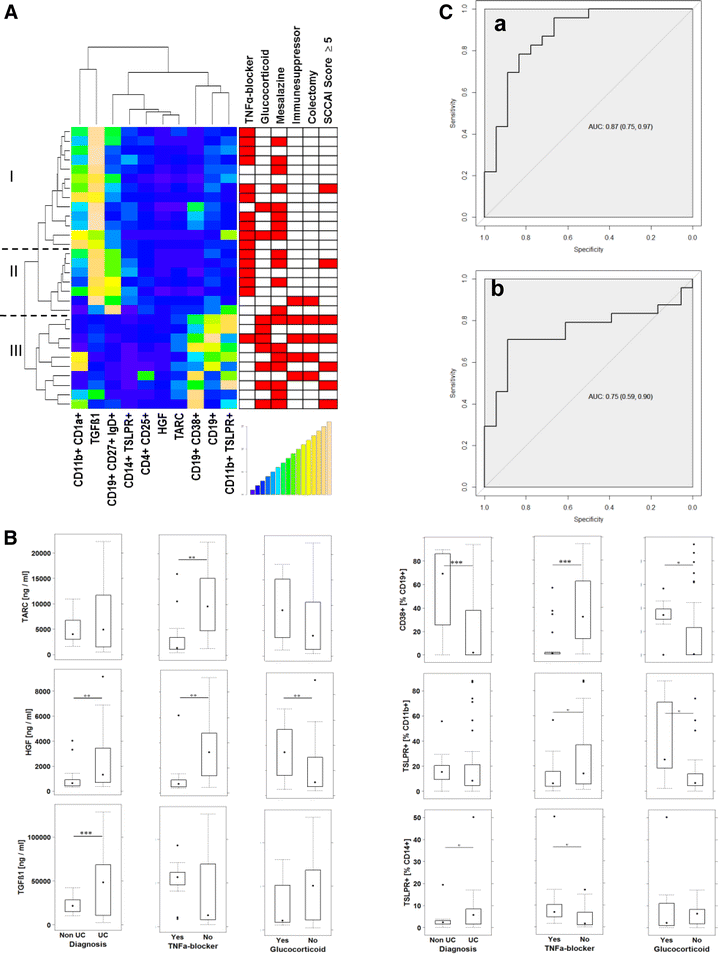

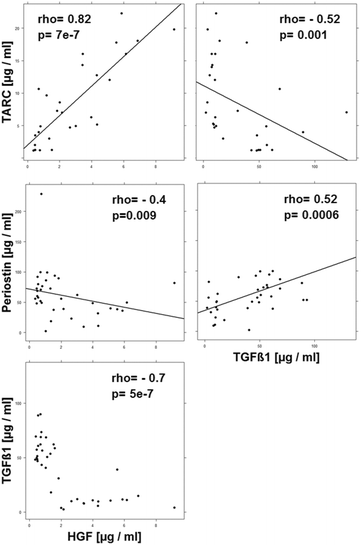
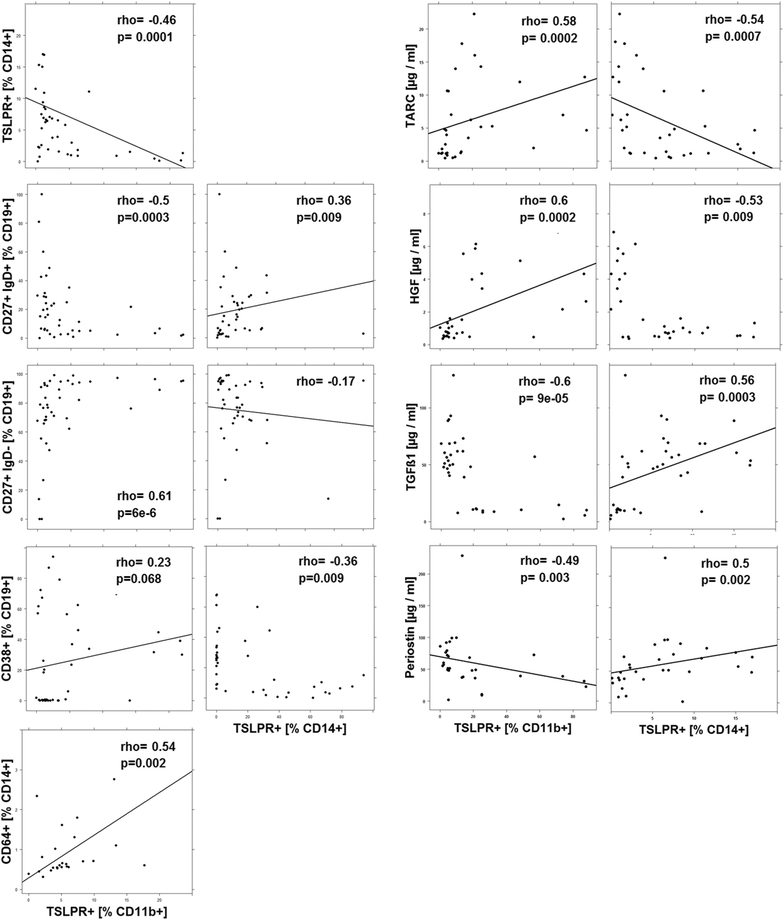
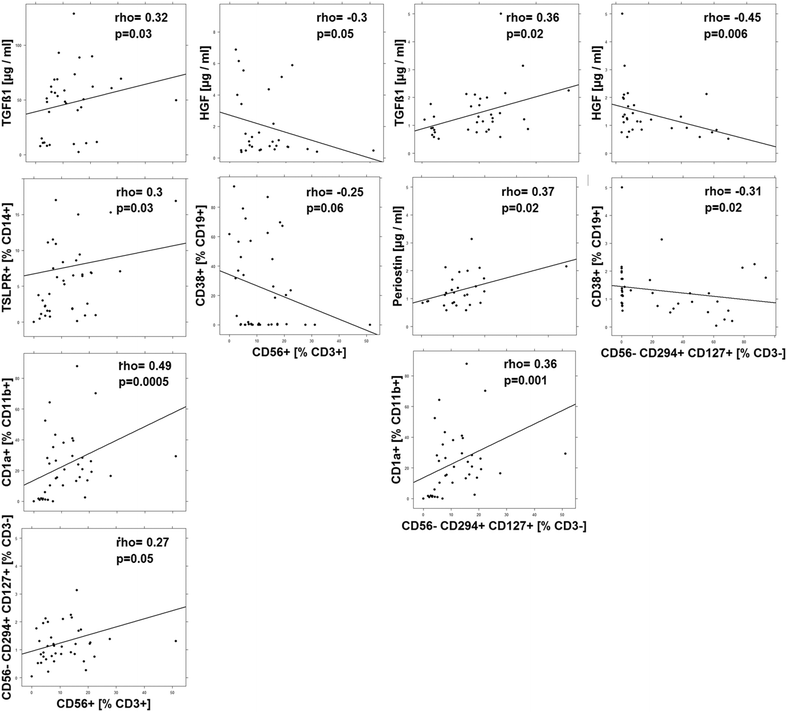
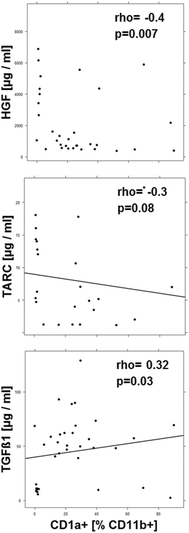
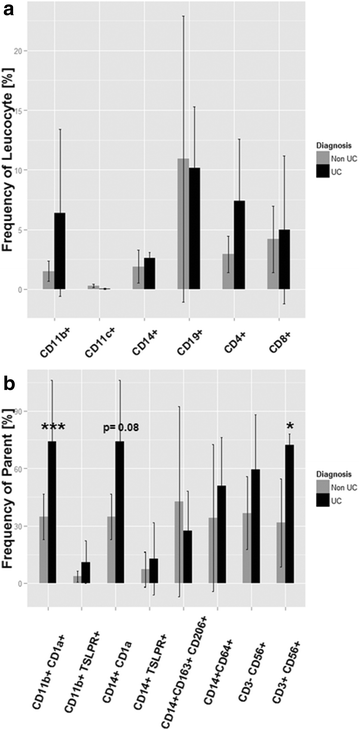
Similar articles
-
CD1a-Expressing Monocytes as Mediators of Inflammation in Ulcerative Colitis.Inflamm Bowel Dis. 2018 May 18;24(6):1225-1236. doi: 10.1093/ibd/izy073. Inflamm Bowel Dis. 2018. PMID: 29788291 Free PMC article.
-
Design and validation of a disease network of inflammatory processes in the NSG-UC mouse model.J Transl Med. 2017 Dec 28;15(1):265. doi: 10.1186/s12967-017-1368-4. J Transl Med. 2017. PMID: 29282132 Free PMC article.
-
A mouse model for ulcerative colitis based on NOD-scid IL2R γnull mice reconstituted with peripheral blood mononuclear cells from affected individuals.Dis Model Mech. 2016 Sep 1;9(9):985-97. doi: 10.1242/dmm.025452. Epub 2016 Aug 4. Dis Model Mech. 2016. PMID: 27491073 Free PMC article.
-
The role of T cell potassium channels, KV1.3 and KCa3.1, in the inflammatory cascade in ulcerative colitis.Dan Med J. 2014 Nov;61(11):B4946. Dan Med J. 2014. PMID: 25370966 Review.
-
Mechanistic insights into the role of probiotics in modulating immune cells in ulcerative colitis.Immun Inflamm Dis. 2023 Oct;11(10):e1045. doi: 10.1002/iid3.1045. Immun Inflamm Dis. 2023. PMID: 37904683 Free PMC article. Review.
Cited by
-
Keratinocyte-derived small extracellular vesicles supply antigens for CD1a-resticted T cells and promote their type 2 bias in the context of filaggrin insufficiency.Front Immunol. 2024 Mar 22;15:1369238. doi: 10.3389/fimmu.2024.1369238. eCollection 2024. Front Immunol. 2024. PMID: 38585273 Free PMC article.
-
CD1a-Expressing Monocytes as Mediators of Inflammation in Ulcerative Colitis.Inflamm Bowel Dis. 2018 May 18;24(6):1225-1236. doi: 10.1093/ibd/izy073. Inflamm Bowel Dis. 2018. PMID: 29788291 Free PMC article.
-
Design and validation of a disease network of inflammatory processes in the NSG-UC mouse model.J Transl Med. 2017 Dec 28;15(1):265. doi: 10.1186/s12967-017-1368-4. J Transl Med. 2017. PMID: 29282132 Free PMC article.
-
Autoantibodies as diagnostic markers and potential drivers of inflammation in ulcerative colitis.PLoS One. 2020 Feb 12;15(2):e0228615. doi: 10.1371/journal.pone.0228615. eCollection 2020. PLoS One. 2020. PMID: 32050001 Free PMC article.
-
Pyodermatitis-Pyostomatitis Vegetans: The Role of Langerin Deficiency in Disease Pathogenesis.J Clin Med. 2025 Jun 12;14(12):4198. doi: 10.3390/jcm14124198. J Clin Med. 2025. PMID: 40565944 Free PMC article.
References
-
- Asokananthan N, Graham PT, Stewart DJ, Bakker AJ, Eidne KA, Thompson PJ, Stewart GA. House dust mite allergens induce proinflammatory cytokines from respiratory epithelial cells: the cysteine protease allergen, Der p 1, activates protease-activated receptor (PAR)-2 and inactivates PAR-1. J Immunol. 2002;169:4572–4578. doi: 10.4049/jimmunol.169.8.4572. - DOI - PubMed
-
- Vu AT, Baba T, Chen X, Le TA, Kinoshita H, Xie Y, Kamijo S, Hiramatsu K, Ikeda S, Ogawa H, et al. Staphylococcus aureus membrane and diacylated lipopeptide induce thymic stromal lymphopoietin in keratinocytes through the Toll-like receptor 2-Toll-like receptor 6 pathway. J Allergy Clin Immunol. 2010;126:985–993. doi: 10.1016/j.jaci.2010.09.002. - DOI - PubMed
Publication types
MeSH terms
Substances
LinkOut - more resources
Full Text Sources
Other Literature Sources
Medical
Research Materials

